What is SaaS sales?

Software as a Service (SaaS) is a model for delivering software through the cloud, allowing users to access applications over the Internet. This setup lets users run software online without purchasing hardware or installing programs.
Typical SaaS applications include online office suites like Microsoft Office and Google Suite, as well as web-based calendar and scheduling tools.
A major advantage of SaaS is that users don't have to worry about updating the software for better performance or security; the provider handles updates on their servers.
[Related article: 15+ SaaS Product Ideas & Examples for Your Startup in 2024]
Here, you can briefly read about the following popular and robust CRM systems for your business:
How do SaaS sales differ from traditional software sales?
This table compares the key differences between the SaaS sales process and traditional software sales:
|
Aspect |
SaaS Sales |
Traditional Selling Software |
|
Product Cost |
Often expensive due to development, support, and maintenance by an external company. |
Varies, but often lower initial cost as it involves a one-time purchase. |
|
Sales Approach |
Consultative SaaS selling techniques; focus on adding value throughout the sales cycle. |
Direct selling; focus on closing the sale. |
|
Investment in Leads |
High; more time and money spent on each qualified lead. |
Moderate; typically less intensive investment per lead. |
|
Client Interaction |
More travel and face-to-face meetings. |
Less travel; more remote communication. |
|
Purchase Model |
Not typically bought in bulk. |
Often bought in bulk. |
|
Relationship Management |
Requires ongoing relationship due to contract renewals. |
Important but less intensive post-sale. |
|
Sales Cycle |
Longer; involves more touchpoints and interactions from sales and marketing. |
Shorter; fewer touchpoints. |
|
Technical Knowledge |
Sales reps need strong sales skills and a deep understanding of product specs and technology. |
Less technical knowledge required. |
|
Support Roles Involved |
Engineers or designers are often involved in client meetings to address complex questions. |
Rarely involves technical roles post-sale. |
|
Sales Rep Role |
Includes account management; reps must maintain strong relationships post-sale. |
Primarily focused on sales; less emphasis on post-sale relationships. |
Effective strategies for selling SaaS products
Each of these strategies plays a crucial role in selling SaaS products. By effectively combining these approaches, you can attract, engage, and retain customers, ultimately driving growth and success for your SaaS business.
Inbound marketing 🎯
Inbound marketing focuses on attracting potential customers to your product through valuable content and interactions. This SaaS sales strategy involves creating and sharing content like blog posts, videos, eBooks, and social media updates that address the needs and pain points of your target audience. By providing useful information, you can build trust and establish your brand as an authority in your field, naturally drawing customers to your product.
Outbound sales 🛒
Outbound sales mean proactively reaching out to potential customers through direct communication channels such as cold calling, email outreach, and social selling. This strategy is often used to target specific prospects who match your ideal customer profile but may not yet be aware of your product.
Product-led growth 🚀
Product-led growth (PLG) focuses on using your product as the primary driver of customer acquisition, retention, and expansion. This approach relies on offering a compelling customer experience and allowing potential customers to understand the value of your product firsthand, often through free trials or freemium models.
Building a successful sales SaaS funnel 📈
A successful SaaS sales funnel guides potential customers through a structured journey from awareness to purchase and beyond. This software-as-a-service sales process involves multiple stages, each designed to move leads closer to becoming paying customers.
[Related article: TOP 7 Sales CRM and Reasons Why You Need One]
Best practices for SaaS lead generation

Now when you know the SaaS sales definition, you can implement these best practices to effectively generate leads for your SaaS business, nurture them through the sales funnel, and convert them into loyal customers.
- Content Marketing: Identify the demands and pain areas of your target audience and provide them with valuable, high-quality content. Content like eBooks, seminars, infographics, and whitepapers can all fall under this category.
- Social Media Marketing: Use social media channels to connect and interact with your intended audience. Participate in relevant discussions, exchange content with followers, and share your own work.
- Email Marketing: Use the sales email campaigns to nurture leads and guide them through the sales funnel. Provide valuable content, updates, and personalized offers.
- Webinars and Live Demos: Host webinars and live demos to showcase your product, educate your audience, and answer questions in real time.
- Search Engine Optimization (SEO): Improve your website's and your content's search engine ranking to make it easier for prospective leads to find you.
- Pay-Per-Click (PPC) Advertising: To increase targeted website visitors, use PPC advertising. You can connect with potential leads through platforms like social media ads and Google Ads.
- Lead Magnets: Offer valuable resources, such as eBooks, templates, checklists, or free trials, in exchange for contact information.
- Referral Programs: Provide discounts, credits, or other incentives to current clients in order to encourage them to recommend new leads.
- Partnerships and Co-Marketing: Collaborate with other companies that serve a similar audience to co-create content, host joint webinars, or cross-promote each other’s products.
Effective SaaS sales pitching techniques
Incorporating this sales methodology into your SaaS sales model helps you create a persuasive presentation that resonates with your audience, highlights the unique value of your SaaS product, and demonstrates how it can solve their specific problems and deliver tangible benefits.
Understand your audience
Knowing your audience is crucial for tailoring your sales pitch to their specific needs and pain points. This involves researching their industry, business challenges, and individual roles within the company.
Highlight unique value propositions
Emphasize what sets your product apart from competitors and how it uniquely solves your audience’s problems. Focus on the distinctive features and benefits that make your SaaS solution the best choice.
Use storytelling
To make your pitch more memorable and captivating, use storytelling techniques. Stories can help illustrate the value of your product in a relatable and compelling way.
Demonstrate the product
You may show prospective buyers how your product operates via a live sales demo. They can better grasp how it functions and see how it can help their company.
Focus on benefits over features
While features are important, potential customers are more interested in how those features will benefit them and solve their problems. Emphasize the outcomes and advantages your product provides.
Stages of a SaaS sales process

Each stage of the sales process for SaaS plays a vital sales role in converting prospects into loyal customers. Let's dive into the key stages that define a typical SaaS sales journey and how to sell SaaS products.
Identify your ICP
Before diving into any sales efforts, it's essential to clearly define your Ideal Customer Profile (ICP). This profile outlines the characteristics of the businesses or individuals who would most benefit from and be interested in your SaaS product. Consider demographics, firmographics, behaviors, pain points, and needs that align with what your product solves. Developing a solid ICP allows your SaaS sales team to focus their efforts efficiently on prospects with the highest potential for conversion.
Prospect
Prospecting is the initial stage of the SaaS sales process, during which you actively search for potential customers who fit your ICP. This involves researching companies, industries, and individuals who may need your SaaS solution. Prospecting methods can vary widely—from cold calling and emailing to leveraging social media platforms and attending industry events. The goal at this stage is to identify and gather information on potential leads that align with your ICP.
Qualify
Once you've identified prospects, the next step is to qualify them. Sales qualification involves determining whether a prospect has both the need and the ability to purchase your SaaS solution. Key aspects to consider during qualification include the prospect's budget, authority to make purchasing decisions, the timeline for implementation, and how well your solution aligns with their specific pain points. Effective qualification helps prioritize your sales efforts and focus resources on prospects with genuine interest and the ability to buy.
Present
The presentation stage is where you demonstrate how your SaaS solution addresses the prospect's pain points and fulfills their needs. This involves tailoring your presentation to showcase the specific benefits and features that are most relevant to the prospect. Presentations can take various forms, such as live demos, webinars, or personalized walkthroughs of your software. The goal is to clearly communicate the value proposition of your SaaS product and build confidence in its ability to solve the prospect's challenges effectively.
Objection handle
During the sales process, objections are inevitable. Objections can range from concerns about pricing and implementation to questions about features or competition. Proactively listening to the prospect's worries, understanding their point of view, and responding to objections with pertinent data and supporting proof are all essential components of effective objection handling. You may significantly improve your ability to overcome objections and accelerate the sales SaaS process by anticipating frequent objections and preparing replies in advance.
Close and nurture
The closing stage is where the prospect makes the decision to become a customer. This involves finalizing details such as pricing, contract terms, and implementation timelines. Closing sales techniques can include creating a sense of urgency, offering incentives, or providing additional value to seal the deal. Once the sale is closed, it's essential to nurture the customer relationship. Assuring client happiness and loyalty involves various tasks, such as onboarding new clients, offering continuing assistance, and keeping constant contact.
[Related article: How To Build A Sales Pipeline To Seal More Deals Faster?]
Tools and software to enhance SaaS sales efforts
Here, you can read short overviews of top tools for the SaaS sales industry.
1. Salesforce
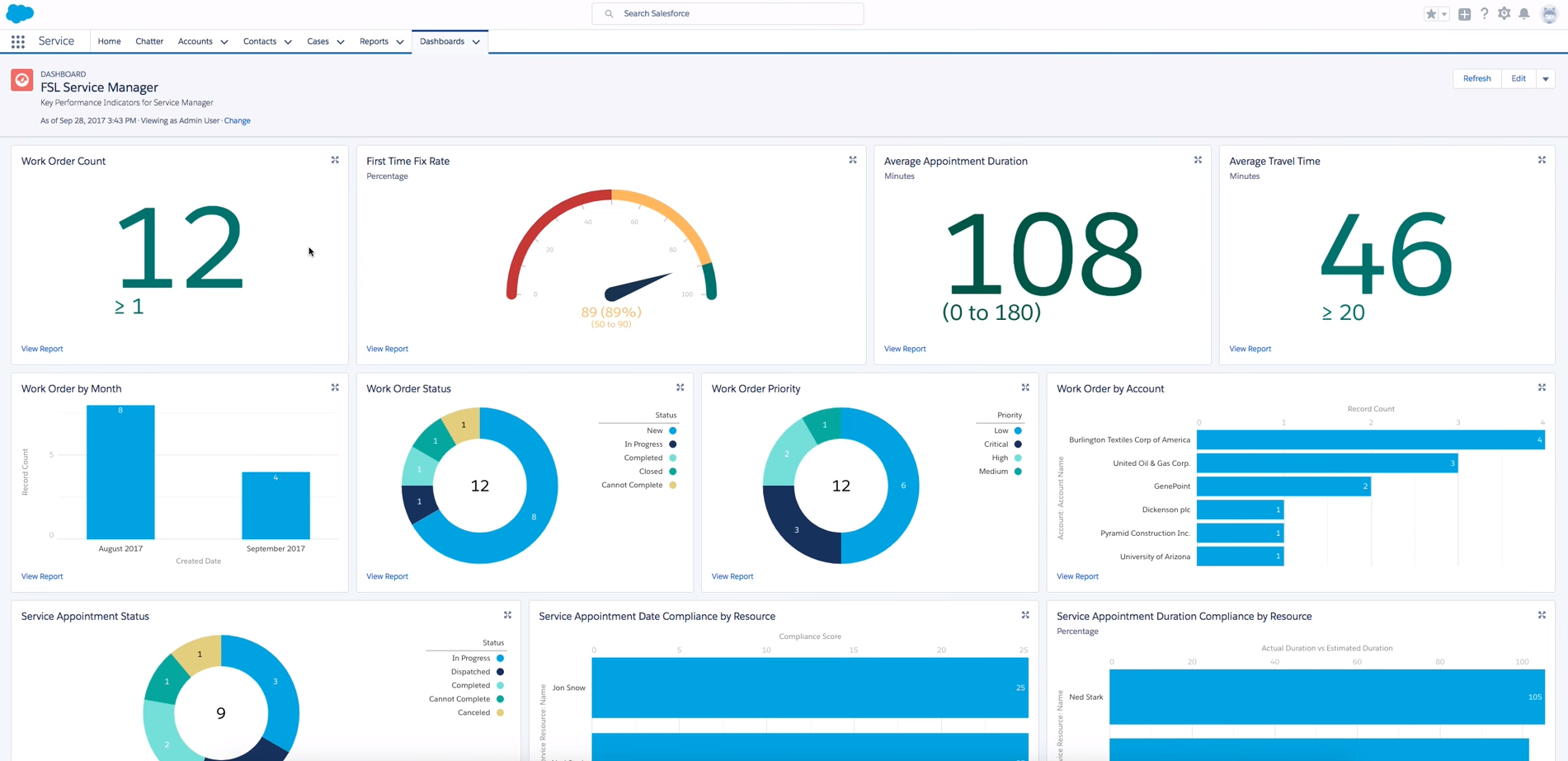
Salesforce is a comprehensive Customer Relationship Management (CRM) platform and enterprise SaaS sales software that empowers sales teams with tools to manage customer interactions, automate tasks, and track sales activity. It offers customizable dashboards, detailed analytics, and seamless integration with other business tools. It enables organizations to optimize their sales processes and drive revenue growth through improved pipeline visibility and sales forecasting.
2. Teamgate
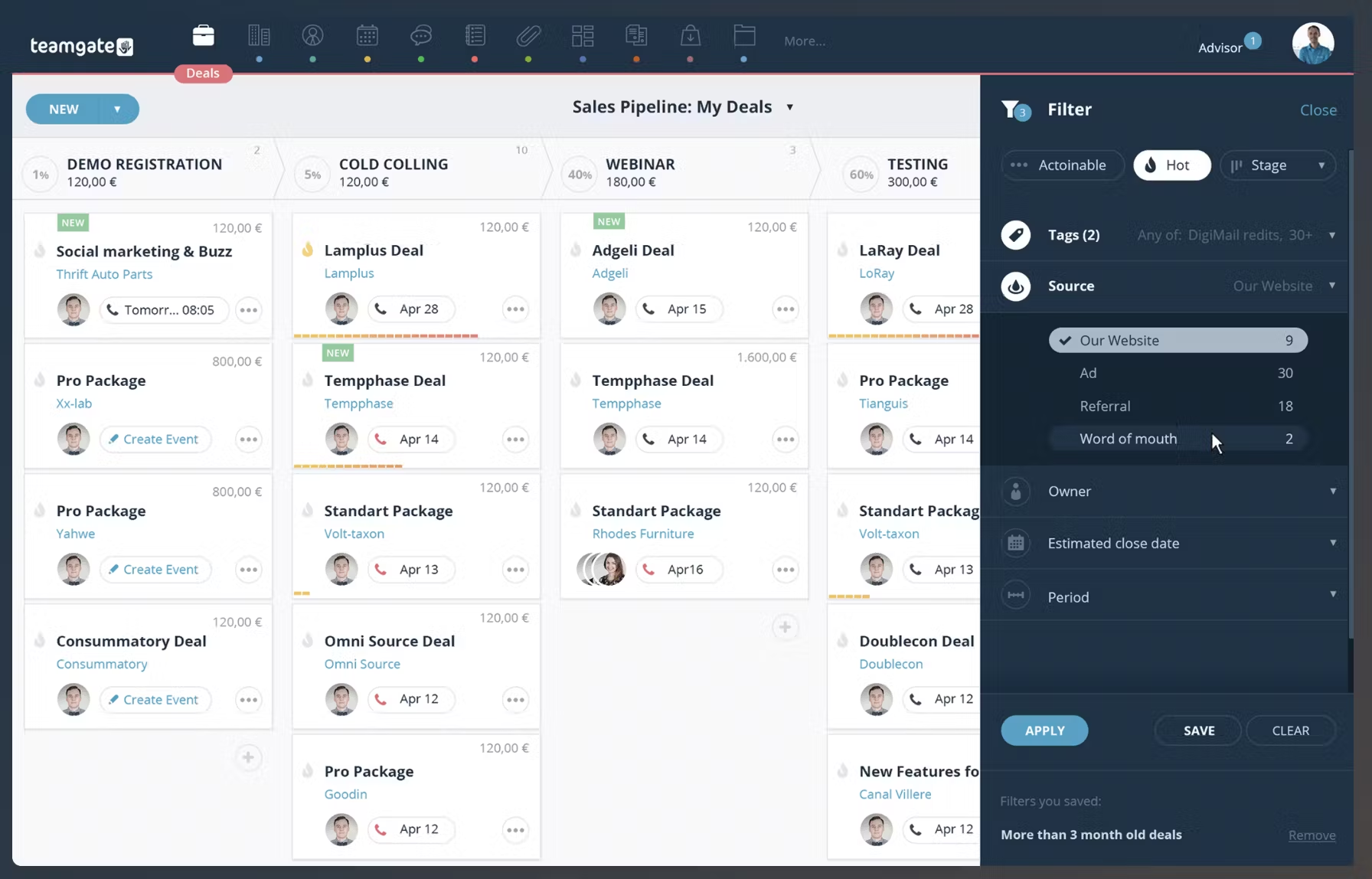
Teamgate is a robust CRM software designed to streamline sales processes and improve team productivity. It offers a comprehensive suite of tools and features tailored to meet the needs of many SaaS and sales specialists. Teamgate facilitates lead scoring based on predefined criteria, helping sales teams prioritize leads with the highest potential for conversion. It also allows for the segmentation of leads and contacts to tailor marketing and sales efforts accordingly.
3. HubSpot Sales Hub
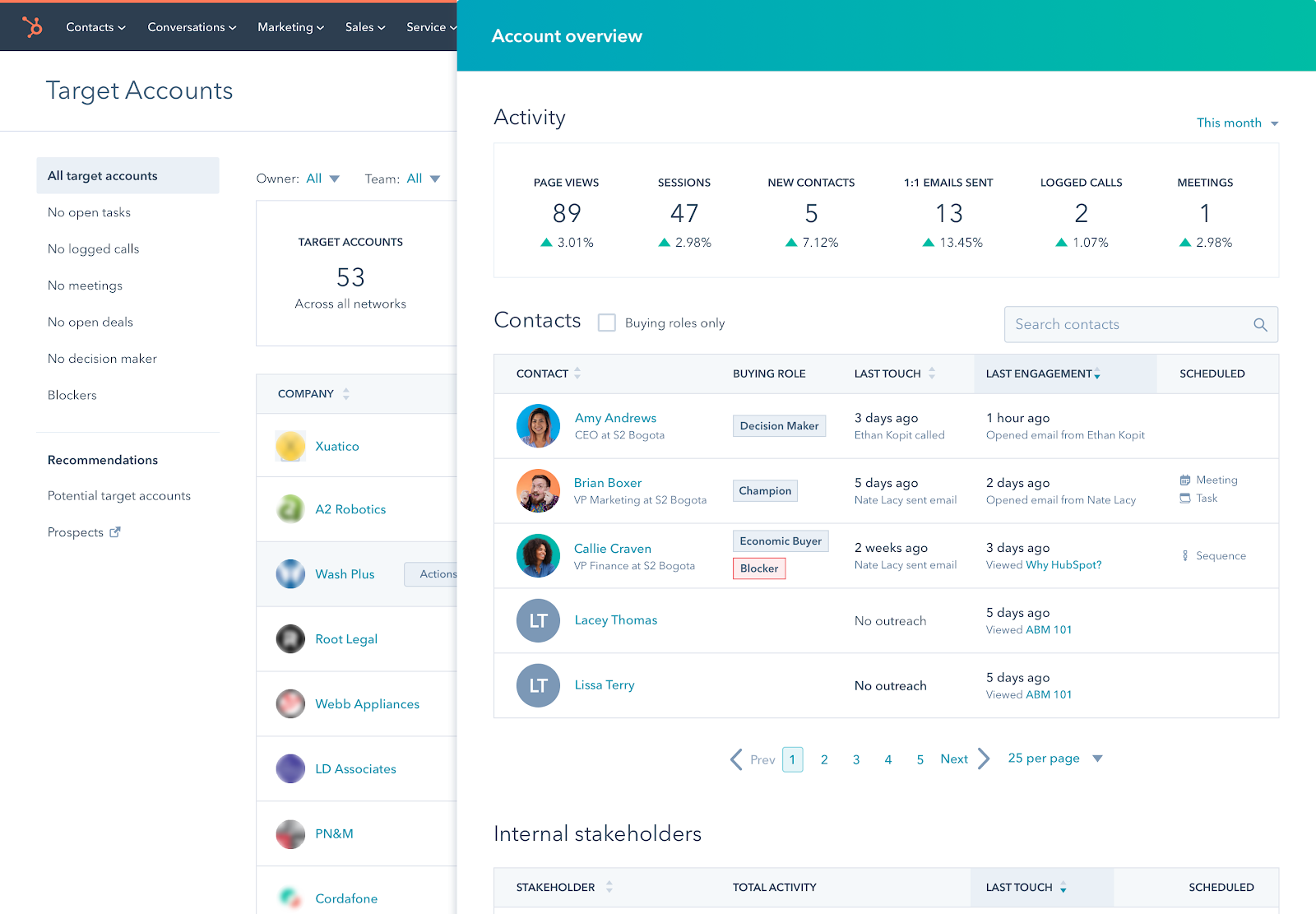
HubSpot Sales Hub is part of the HubSpot CRM suite, offering SaaS software sales to sales professionals. It includes email tracking, templates, and scheduling tools to streamline outreach efforts. The CRM functionality helps manage contacts, deals, and tasks in one centralized platform, while its reporting capabilities provide insights into the performance of your sales, facilitating better decision-making and strategy refinement.
4. Outreach
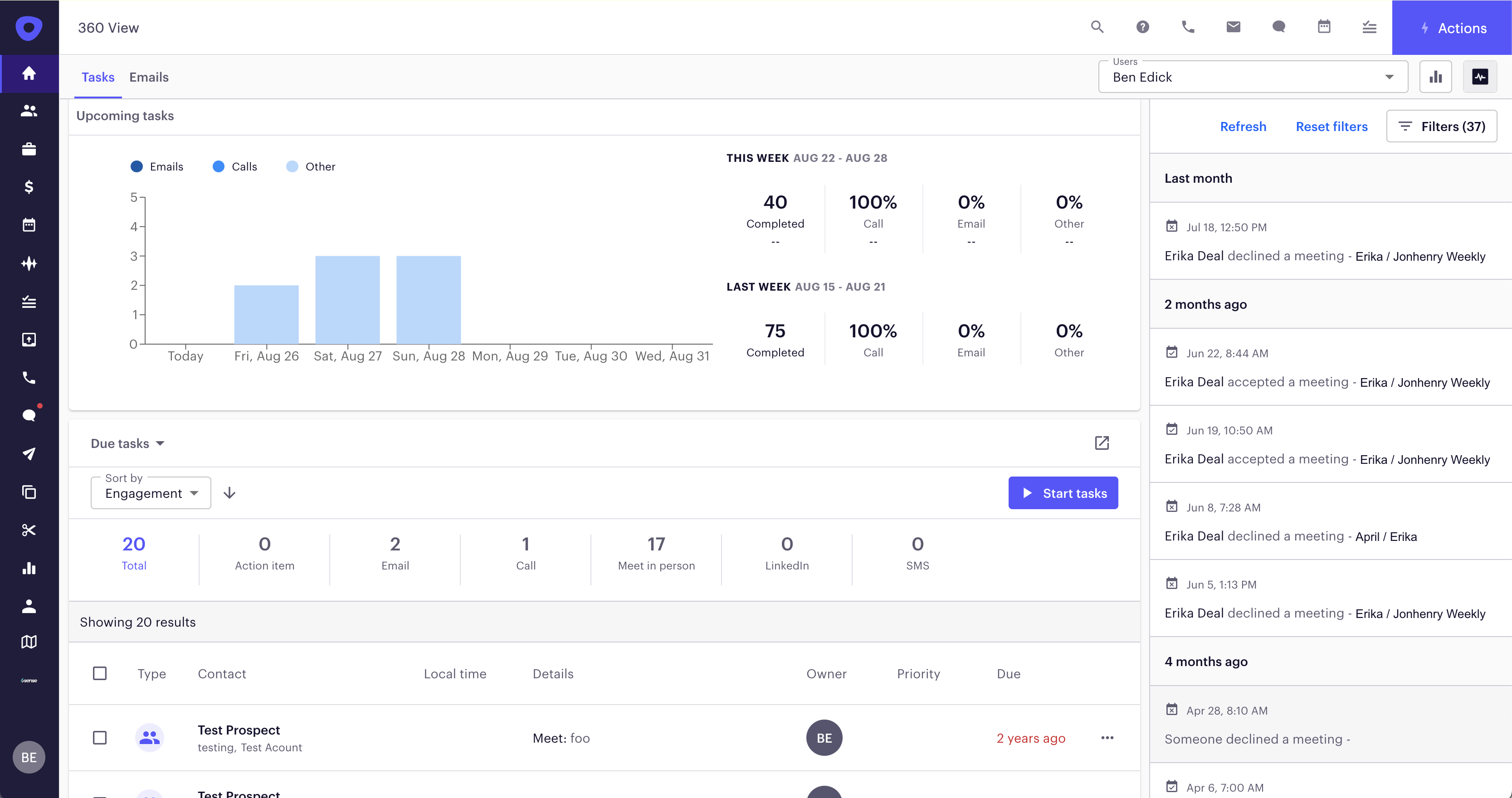
Outreach is a sales engagement platform that focuses on optimizing sales communication and productivity. It automates email sequences, call logging, and task management, enabling sales teams to manage their outreach efforts at scale efficiently. Outreach's analytics and reporting features provide visibility into campaign performance, helping sales leaders identify top-performing tactics and optimize their strategies to maximize conversion rates.
5. Freshsales
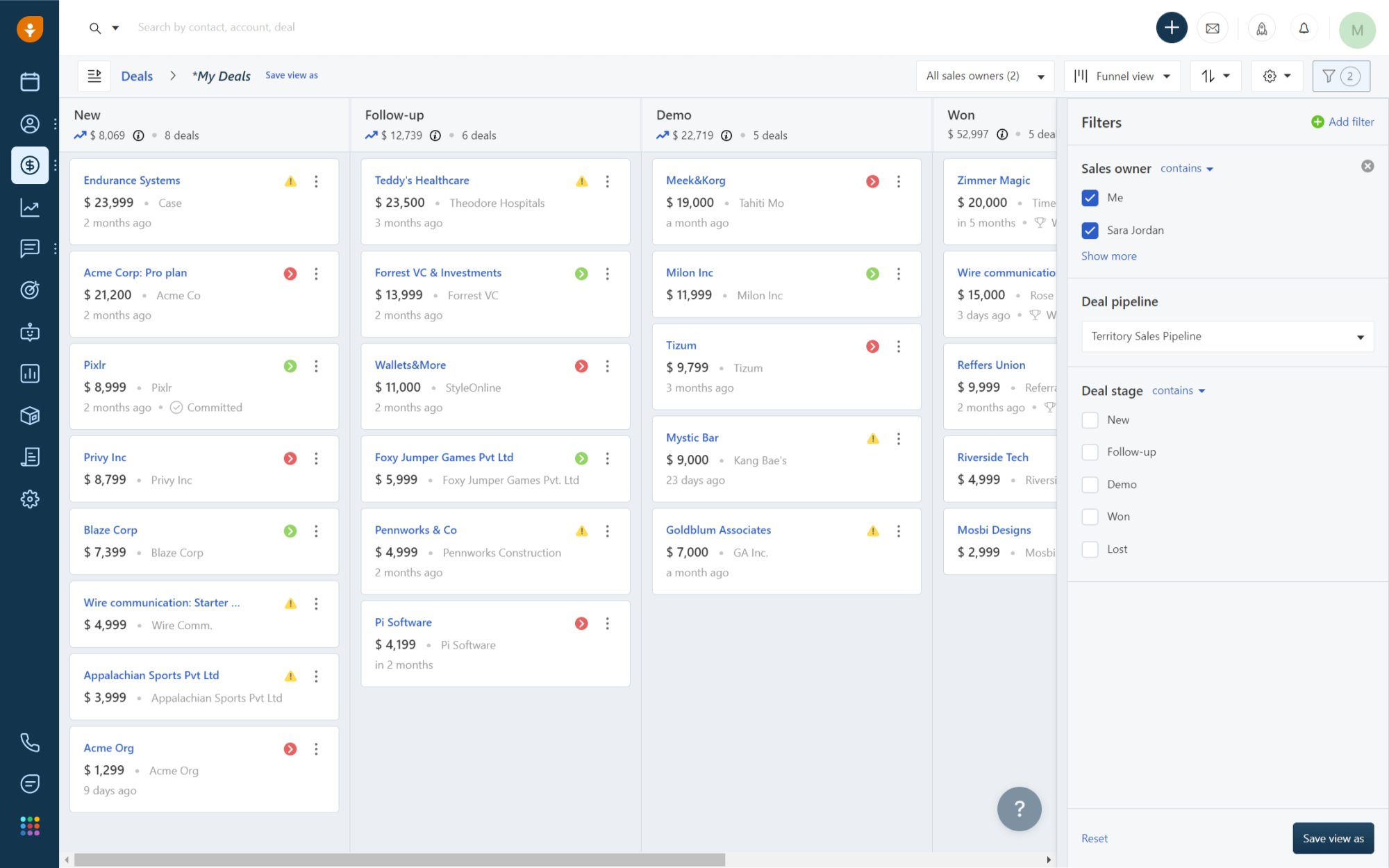
Freshsales is a powerful CRM software designed to help businesses streamline their sales processes and improve customer engagement. It offers a range of features tailored to meet the needs of sales teams, from lead management to deal closure and beyond. Freshsales provides a visual and customizable sales pipeline that allows sales teams to track deals through various stages. This helps prioritize tasks, forecast sales, and ensure a streamlined sales process.
6. Drift
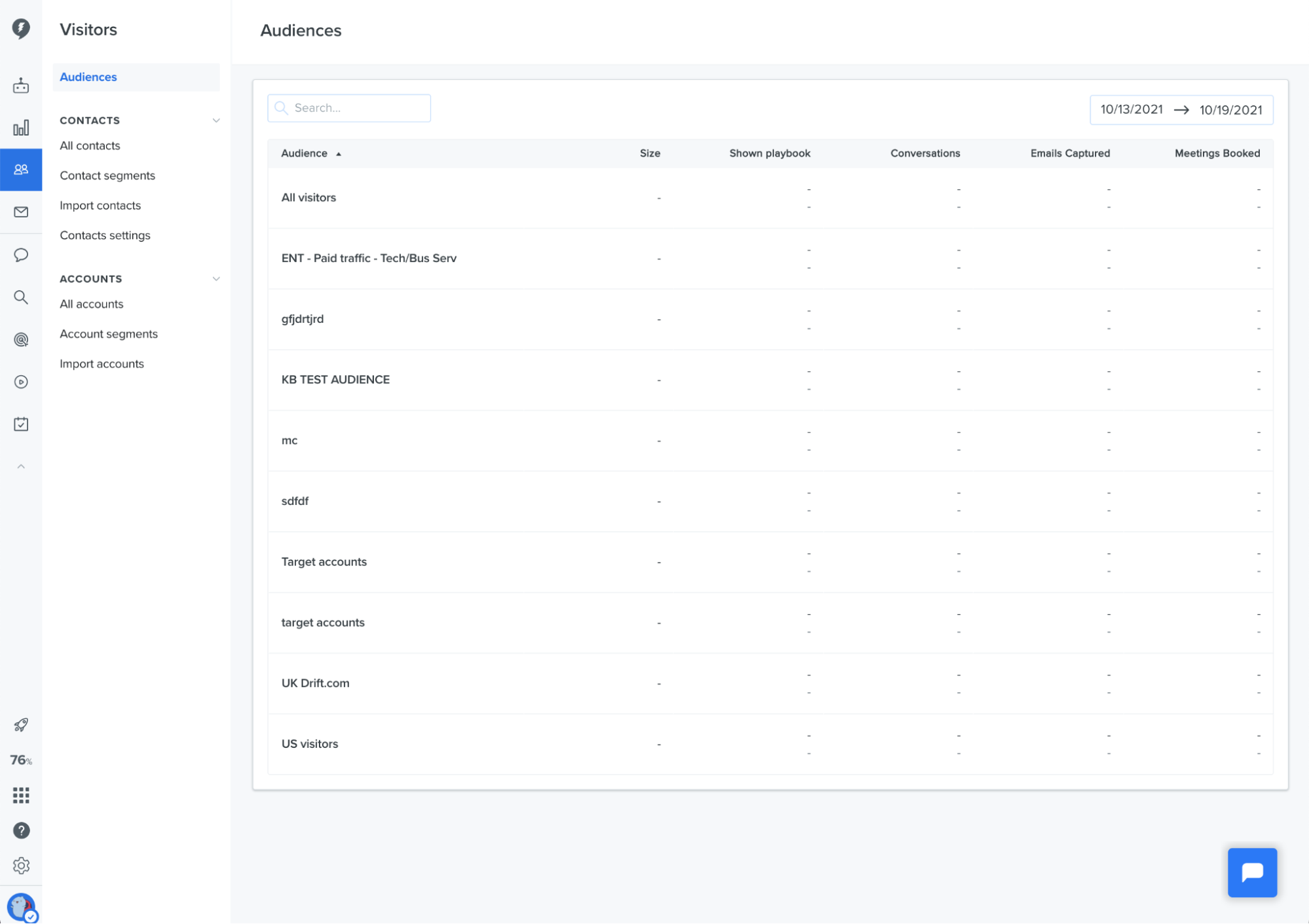
Drift is a conversational marketing platform that leverages chatbots and live chat to engage website visitors in real time. It qualifies leads, schedules meetings, and routes qualified prospects to sales reps instantly. Drift's integration with CRM systems allows for seamless data synchronization, enabling personalized interactions based on visitor behavior and improving overall lead conversion rates through proactive engagement.
7. ZoomInfo
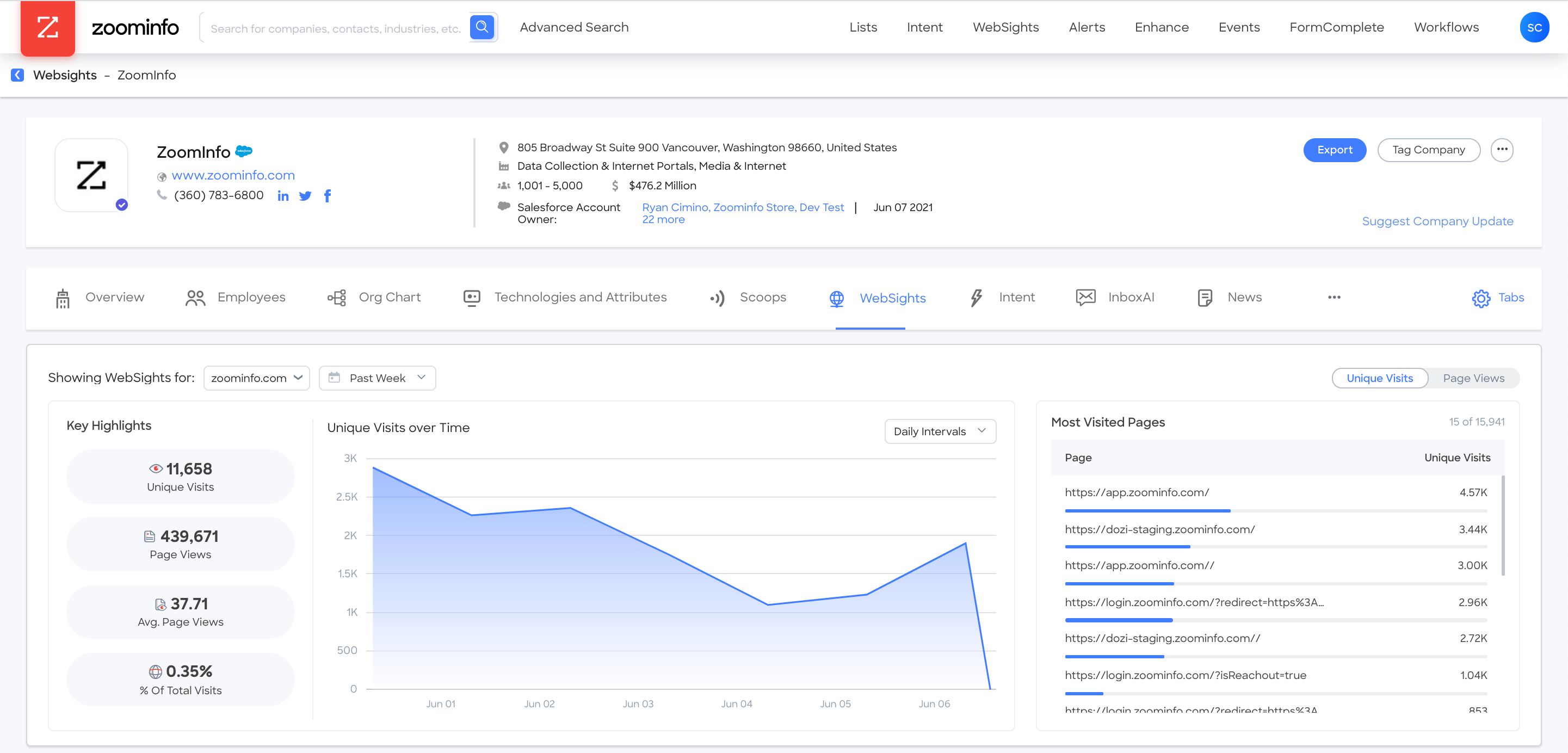
ZoomInfo is a B2B contact database and SaaS provider that offers accurate contact information, company insights, and organizational charts. It helps sales teams identify decision-makers, personalize outreach efforts, and improve lead generation. ZoomInfo's integration with CRM systems ensures data consistency and enhances sales efficiency by delivering actionable insights and real-time updates on target accounts and prospects.
[Related article: What Is the Difference Between Apollo vs ZoomInfo?]
8. PandaDoc
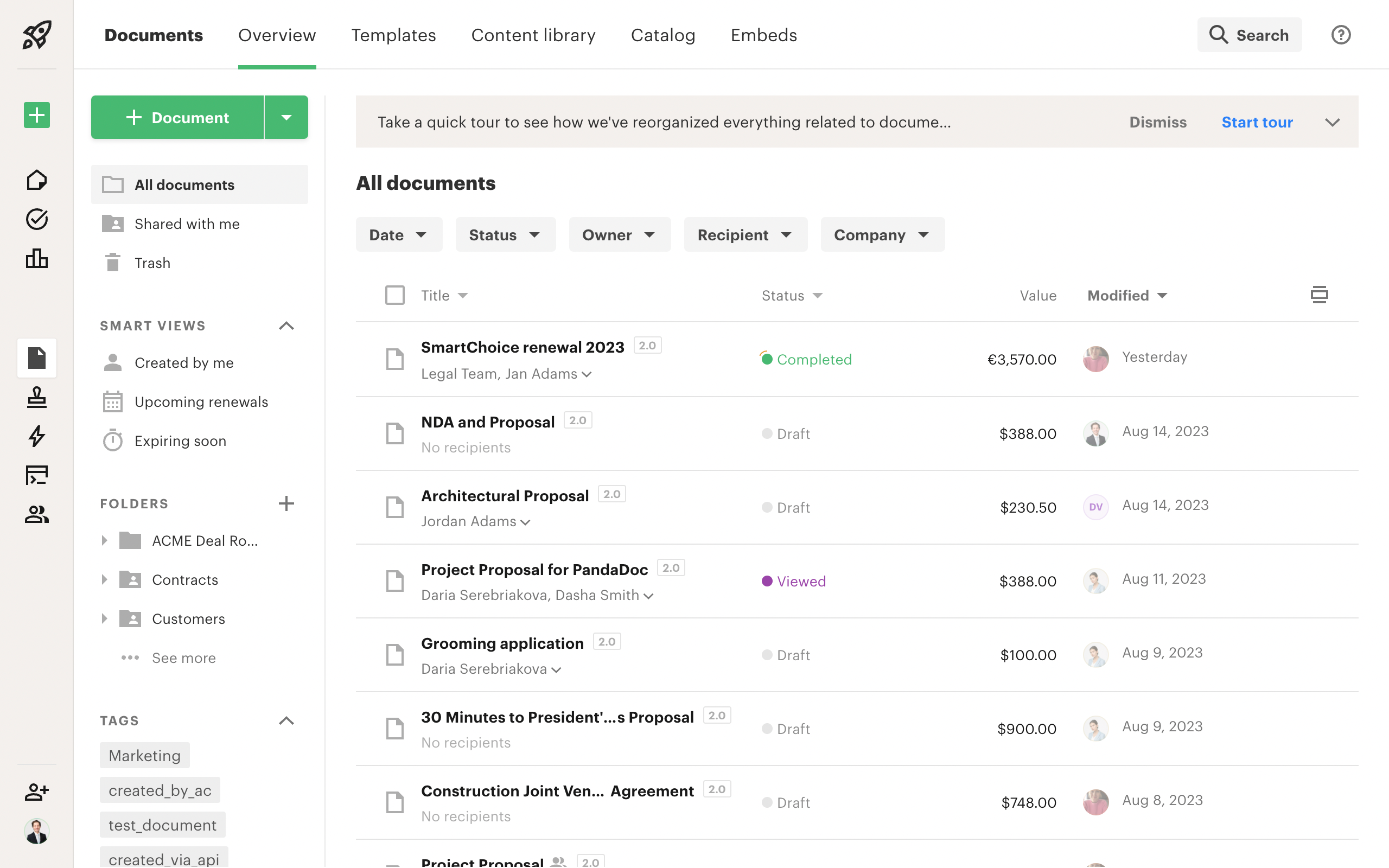
PandaDoc is a document management platform that simplifies the creation, sending, and e-signing of proposals, contracts, and other sales documents. It offers customizable templates, electronic signature capabilities, and real-time document tracking, enabling sales teams to streamline the entire document workflow and accelerate deal closure. PandaDoc's analytics provide visibility into document engagement, helping sales reps prioritize follow-ups and improve negotiation strategies.
9. SalesLoft
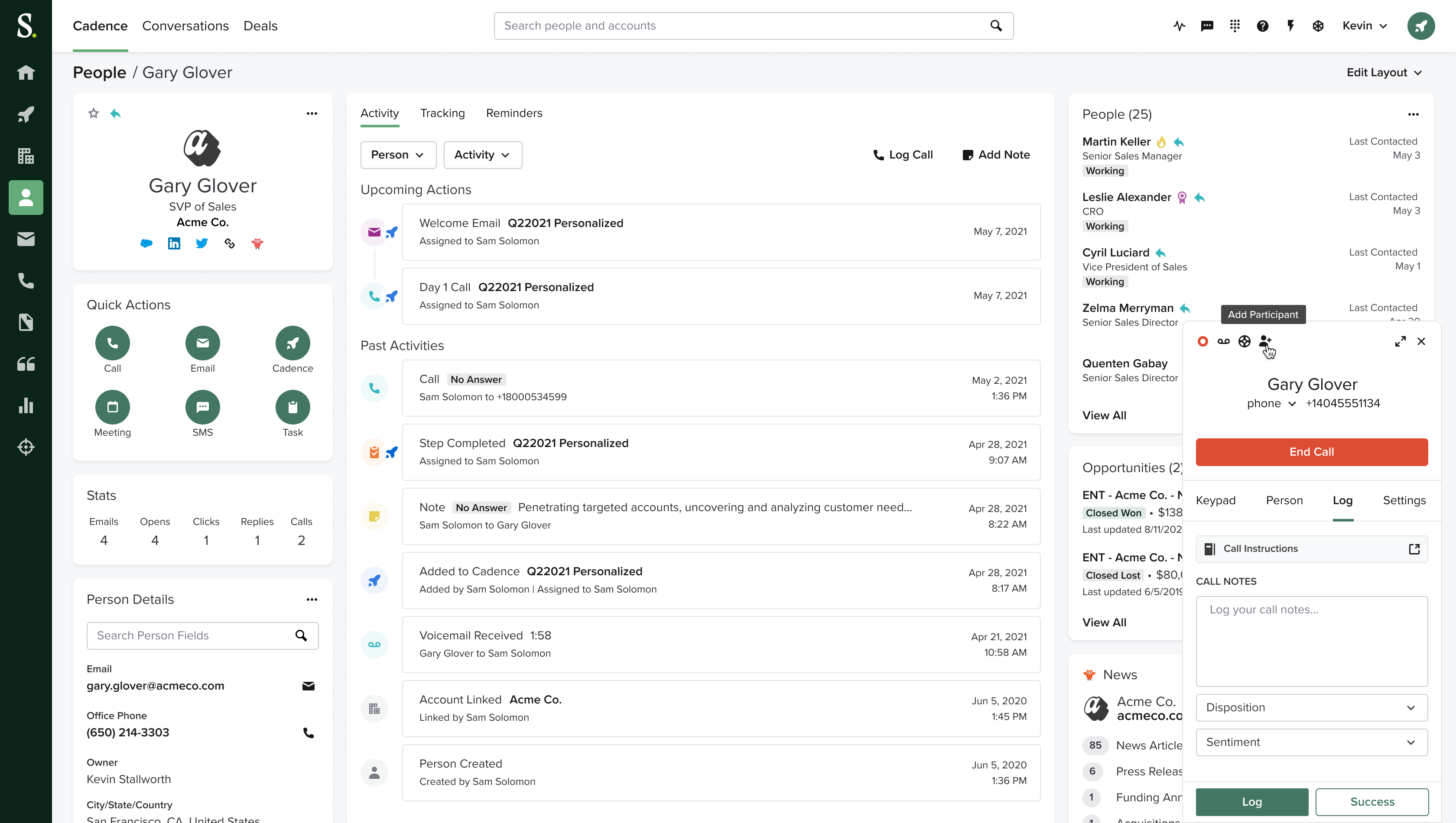
SalesLoft is a sales engagement platform and sales SaaS software that combines email automation, cadence management, and analytics to optimize sales communication and outreach. It enables sales teams to create personalized email sequences, track prospect engagement, and schedule follow-up tasks efficiently. SalesLoft's reporting features provide insights into email performance metrics and campaign effectiveness, empowering sales leaders to refine their messaging and improve conversion rates through data-driven decision-making.
10. Gong.io
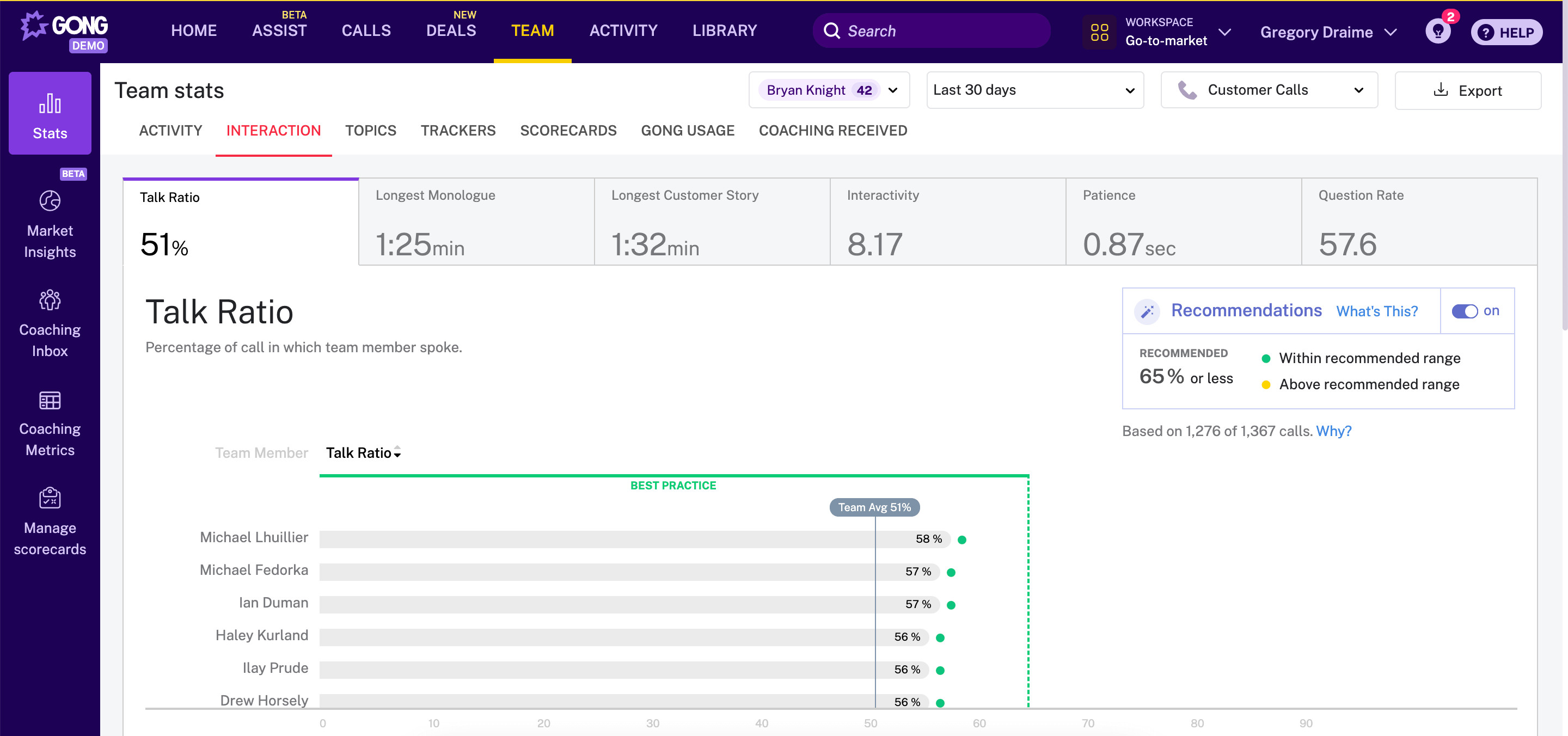
Gong.io is an AI-powered conversation intelligence platform that analyzes sales conversations, calls, and meetings. It provides insights into customer interactions, identifies trends, and offers coaching opportunities for sales teams. Gong.io's AI-driven analytics highlight conversation strengths, weaknesses, and competitive insights, enabling SaaS reps generally to refine their pitch, improve objection handling, and ultimately increase win rates by aligning their sales approach with customer preferences and expectations.
Common challenges in SaaS sales and how to overcome them
Here are common SaaS sales challenges and sales tips on how to increase SaaS sales:
- High competition: New and innovative companies are constantly entering the market, making it hard to position your product as the best. Differentiate your product by highlighting unique features, superior customer support, and success stories. Regularly update and improve your product based on customer feedback and market trends.
- Lack of technical background: Salespeople without a tech background may find it difficult to understand the product's technology and the client's software stack. Provide comprehensive sales training courses and resources for sales reps to understand the product better. Encourage ongoing learning and involve technical experts in sales discussions when necessary.
- Balancing consultative selling: Finding the right balance between educating clients and over-explaining, which can risk losing the deal. Develop clear, concise sales materials and training on effective communication. Focus on understanding the client's needs and tailoring the information to address their specific pain points without overwhelming them.
Key metrics to track in SaaS for sales

Once you’ve mastered the process of selling your SaaS product, it’s crucial to monitor the success of your efforts. What does SaaS sales stand for? Here are four key sales metrics to track:
- Churn Rate: This shows the percentage of customers who stop using your SaaS product within a certain period. Keeping this number low is vital, as a high churn rate indicates customer dissatisfaction and can hurt your revenue.
- Customer Acquisition Cost (CAC): CAC is the total cost of acquiring a new customer, covering all marketing and sales expenses. This metric helps you understand how much you're spending to gain each new customer and whether your current strategies are cost-effective.
- Monthly Recurring Revenue (MRR): MRR measures your consistent and predictable revenue streams, excluding one-time payments. This metric is crucial for predicting future revenue and growth based on current monthly subscriptions.
- Customer Lifetime Value (CLTV): The total value a client provides to your business over the period of their relationship with you is represented by their CLTV. Knowing this statistic enables you to decide how much money to spend on bringing in new clients and keeping hold of current ones.
[Related article: The Right CRM Metrics for Your Business]
The role of customer feedback in refining SaaS sales approaches
Customer feedback is integral to refining SaaS in sales approaches in several key ways. Firstly, it provides invaluable insights into customer needs, pain points, and priorities, enabling sales teams to tailor their approaches accordingly. By listening to feedback, sales professionals can uncover new opportunities to enhance product offerings and better align with customer values.
Moreover, customer feedback contributes to improving the overall customer and SaaS sales experience. Understanding how customers perceive and use the product enables sales teams to guide potential buyers more effectively through the onboarding process, ultimately reducing churn and enhancing satisfaction.
Actively soliciting and acting upon feedback demonstrates a customer-centric approach, fostering trust, loyalty, and long-term relationships. It shows a commitment to meeting customer needs and preferences, encouraging open communication and deeper partnerships that drive mutual growth and success in the SaaS industry.
Building and maintaining customer relationships in SaaS selling

Now, when you know SaaS sales meaning, building customer relationships in SaaS selling is foundational to long-term success. Maintaining customer relationships is not just about closing deals but cultivating long-term partnerships based on trust, value, and mutual success. By focusing on these key principles, SaaS companies can foster loyalty, drive customer satisfaction, and achieve sustainable growth.
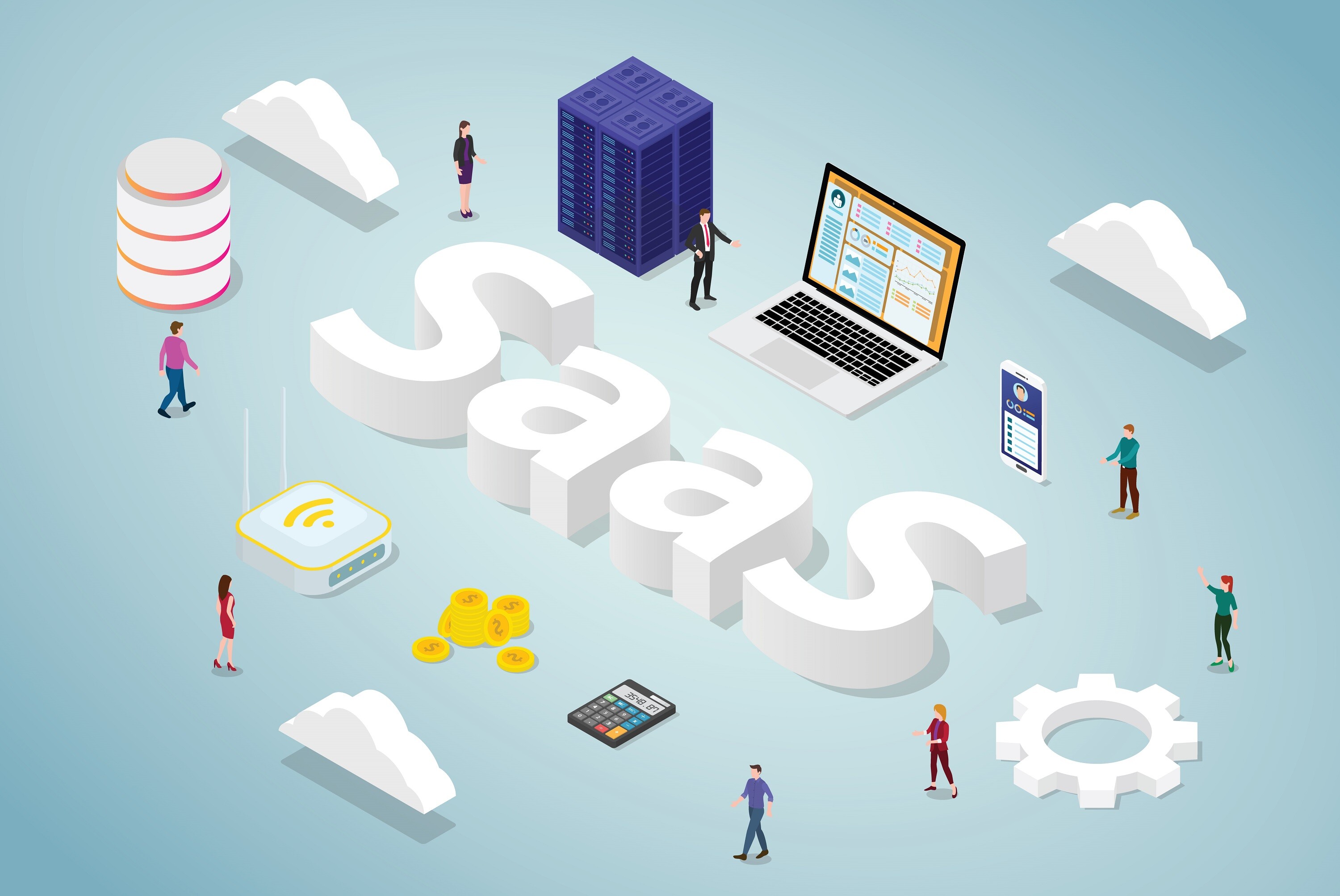
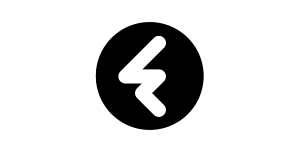
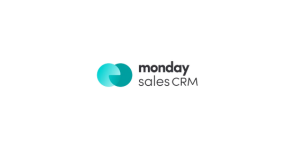
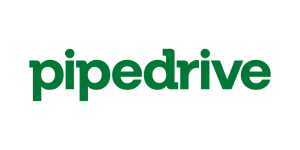
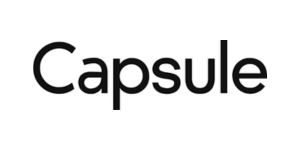
.png?width=140&height=140&name=Noah%20(1000%20x%201000%20px).png)



